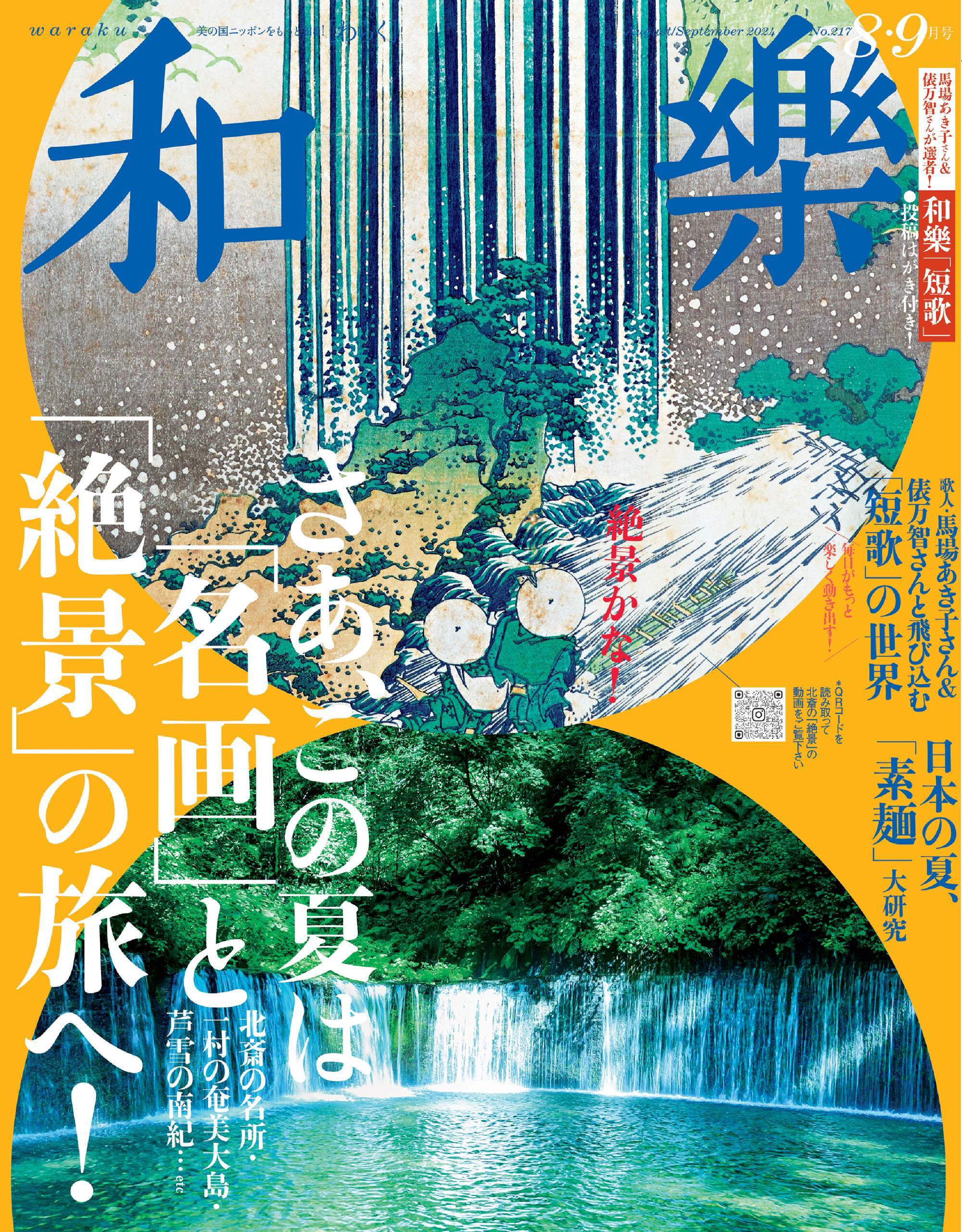In the genre of art known as 浮世絵 (ukiyo-e, “pictures of the floating world”), one artist’s name that stands out is 喜多川歌麿 (Kitagawa Utamaro, c. 1753-1806). A look into his techniques reveals why Utamaro’s woodblock prints and paintings remain popular even today around the world.
The technical genius of Utamaro
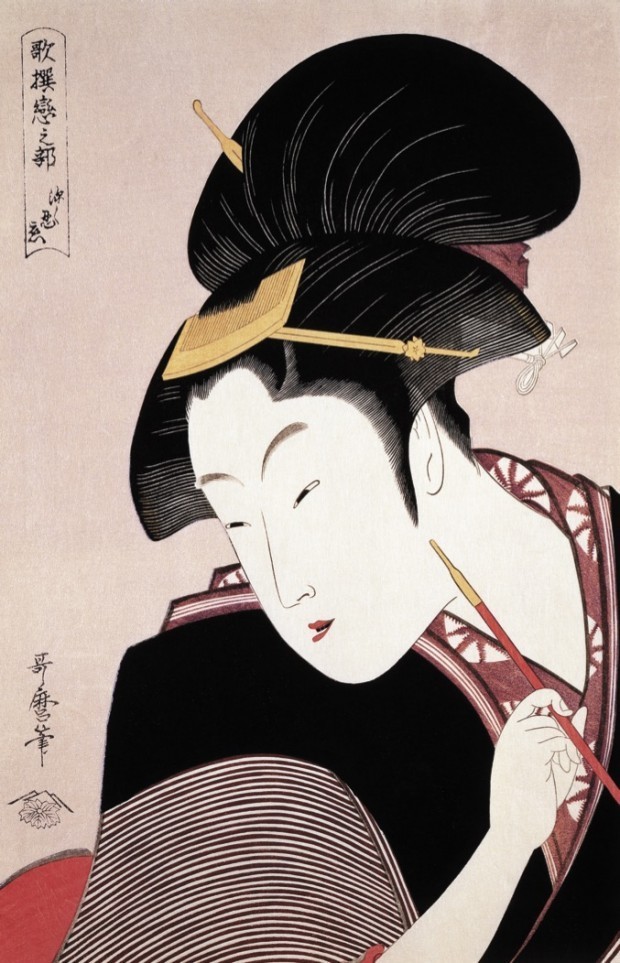
The ukiyo-e master Kitagawa Utamaro entranced the men of Edo (present-day Tokyo) with his subtly sensual portraits of beautiful women, a genre known as 美人画 (bijin-ga) in which he excelled. Utamaro pioneered 大首絵 (ōkubi-e, portrait-style prints), which featured exquisite close-ups of beauties’ faces. These not only garnered him much popularity in Japan, but abroad as well. As soon as his ōkubi-e woodblock prints made it overseas, they created quite the sensation and swept through the art world.
Why did Utamaro’s works find success abroad? It is said that the reason behind Utamaro’s popularity overseas lies in the fact that his compositional and drawing techniques were completely different from portraiture in the West, and Westerners found the Japanese artist’s portrayal of women to be particularly charming. Prior to his series of bijin-ga, Utamaro found success with his detailed illustrations of the natural world coinciding with the natural science boom that took hold in the Edo period (1603-1868) as a sophisticated hobby. Utamaro would use his same naturalist gaze to look upon and draw the women of Edo, and develop his image as a connoisseur of women.
Seeking new ways to capture beauty
Before publishing his portrait prints of beautiful women, Utamaro experimented with and then mastered various techniques suited to the ōkubi-e format that added a refined quality to his works. For example, one of the most representative carving techniques was one called 毛割 (kewari), which was employed to capture the fine lines of a woman’s all-important hairstyle and imbued a feeling of sensitivity. The artist also made use of embossing techniques, daring one-color backgrounds, and treating the background with shimmering mica in a display of extravagance.
It was not just Utamaro’s compositional skills that impressed viewers. With these visually-appealing techniques, he produced a glamour seemingly unlike anything witnessed before. Utamaro’s collection of portraits of beauties exemplify how the artist passionately sought out the best ways to depict the beauty of women and undeterred, developed many techniques to achieve his vision. Let’s take a closer look at the artist’s brilliant designs.
1. Delicate strands of hair expressed by the kewari technique
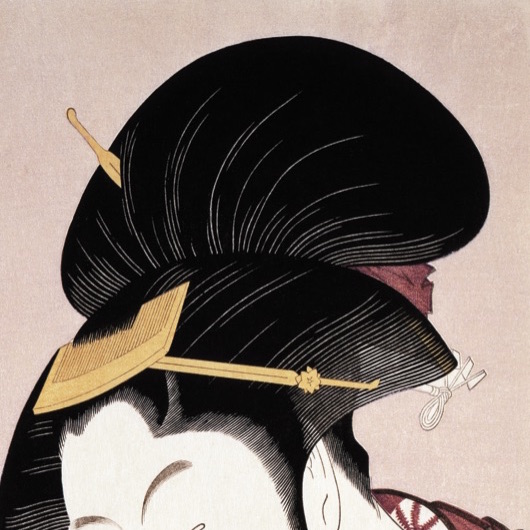 “Deeply Hidden Love” in Kitagawa Utamaro’s Anthology of Love series, ōban size multicolored print, c. 1793-1794. Image: Fukuma Hidenori (Aflo)
“Deeply Hidden Love” in Kitagawa Utamaro’s Anthology of Love series, ōban size multicolored print, c. 1793-1794. Image: Fukuma Hidenori (Aflo)
In the case of close-up portraits where the subject’s head and upper torso fill the frame, emphasis lies less with the background narrative and more with the piece’s design and formal elements, such as line, shape, color, and composition. In regards to ōkubi-e of beautiful women, the deciding factor of their loveliness is the way in which a woman’s hair is drawn – the sensitivity of line and form is what helps produce the sensuousness of Utamaro’s works.
With the kewari technique of carving the outline of individual strands of hair as seen on a woman’s hairline or in overlapping layers of hair, Utamaro could delicately express the movement and even complex forms of a woman’s hairstyle. These fine lines are also used to capture the luster of the subject’s hair. An expert engraver could carve lines less than a millimeter in width!
2. Elegance in subtlety with the karazuri technique
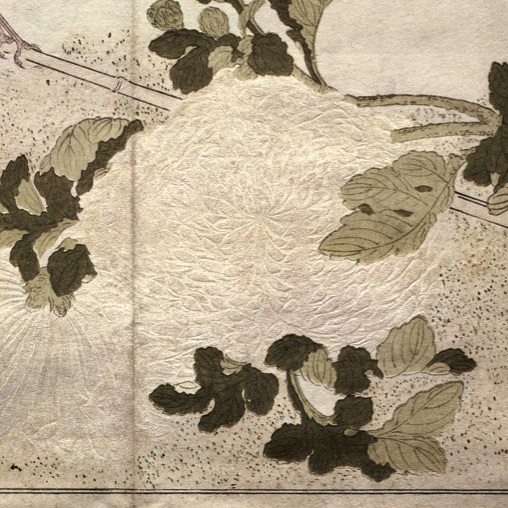
Before his series of beautiful women portraits, Utamaro utilized the 空摺り (karazuri) technique of embossing in his book of kyōka poetry paired with woodblock printed illustrations of birds and flowers. In embossing, no color is added to the printing block, but the paper is firmly pressed into the carved block to create a raised design in the surface of the paper. This technique adds an intriguing texture and depth as can be seen here in the white blossom. Utamaro frequently applied the embossing technique in the 着物 (kimono, traditional Japanese wear) designs and backgrounds in his portraits of women.
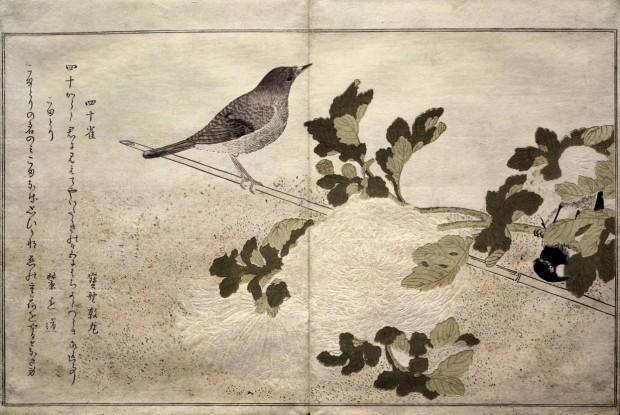 Kitagawa Utamaro’s “Japanese robin” from the A Myriad of Birds compared with Kyōka Poems series, polychrome woodblock print, book 2, circa 1790, 25.5 × 18.8 cm, Chiba City Museum of Art.
Kitagawa Utamaro’s “Japanese robin” from the A Myriad of Birds compared with Kyōka Poems series, polychrome woodblock print, book 2, circa 1790, 25.5 × 18.8 cm, Chiba City Museum of Art.
3. An abstract background to emphasize the subject with jitsubushi
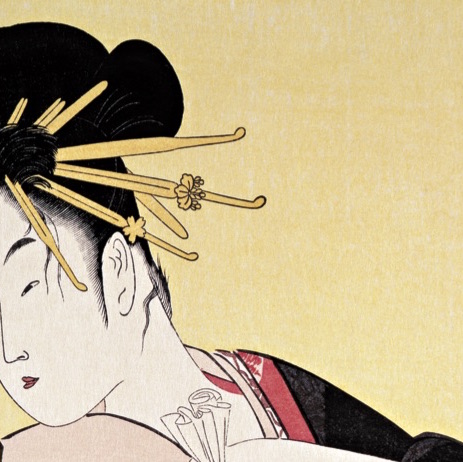
In the technique known as 地潰し (jitsubushi), the background is printed with a single color. By eliminating any background scenery, the subject and their personality are emphasized. Though using only one color may seem easy, only skilled printers could pull off this highly technical process of printing the ink uniformly. The yellow-colored background seen here came to be one of Utamaro’s specialities and is called 黄潰し (kitsubushi), meaning to block out with the color yellow.
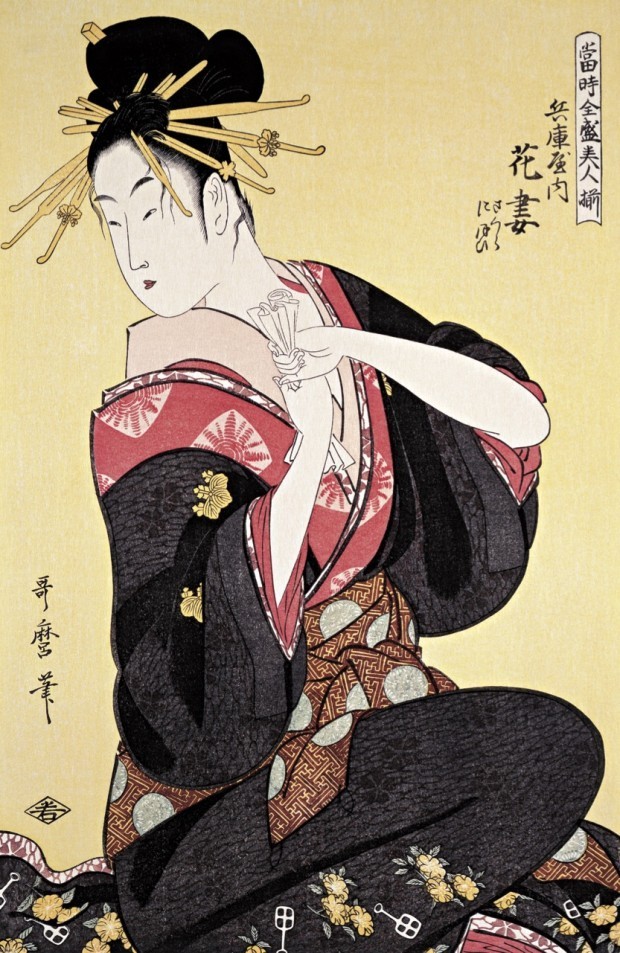 “Hanazuma of the Hyōgoya” from the series Array of Supreme Portraits of the Present Day by Kitagawa Utamaro, ōban size multicolored woodblock print, 1794. Image: Fukuma Hidenori (Aflo)
“Hanazuma of the Hyōgoya” from the series Array of Supreme Portraits of the Present Day by Kitagawa Utamaro, ōban size multicolored woodblock print, 1794. Image: Fukuma Hidenori (Aflo)
4. Magnified richness with the kirazuri technique
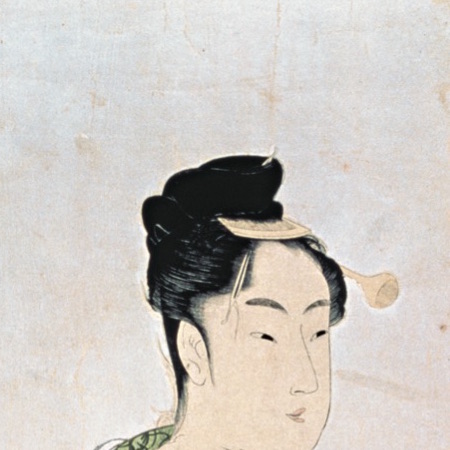
The technique known as 雲母摺 (kirazuri) adds shimmery mica powder to the jitsubushi one-color background design mentioned above, to produce and even more gorgeous print. Contrasted against the mica ground, the woman’s white skin appeared more luminous.
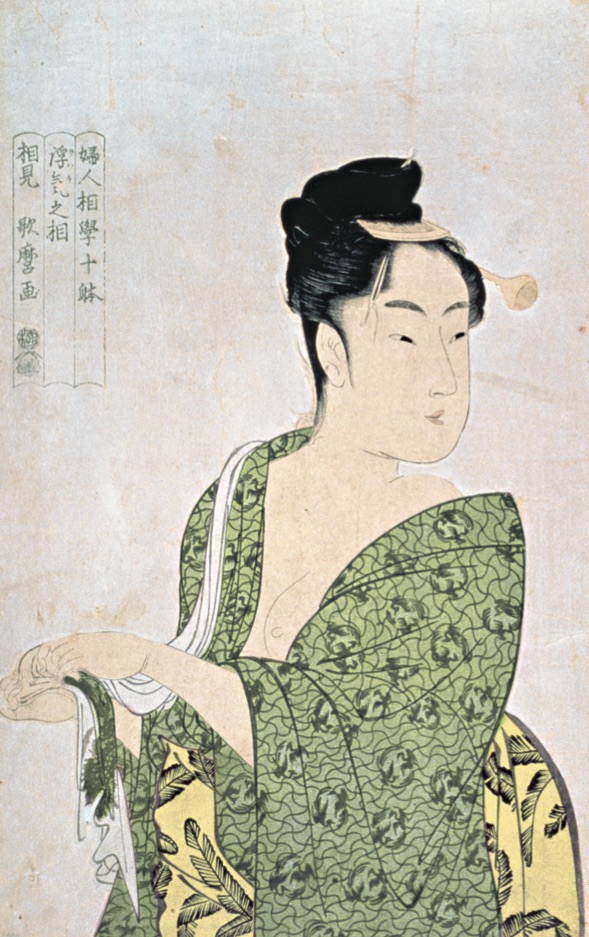 “The Fancy-free type” by Kitagawa Utamaro in his Ten Physiognomies of Women series, polychrome woodblock print with powdered mica ground, circa 1792-1793. Image: Super Stock (Aflo)
“The Fancy-free type” by Kitagawa Utamaro in his Ten Physiognomies of Women series, polychrome woodblock print with powdered mica ground, circa 1792-1793. Image: Super Stock (Aflo)
Want to see Utamaro’s works in person?
Please note that the following exhibitions are no longer on display:
“Reunited after 138 Years – Utamaro’s epic, Snow at Fukagawa and Cherry Blossoms at Yoshiwara” Exhibition
Schedule: July 7, 2017 – October 29, 2017
Venue: Okada Museum of Art
“Inventing Utamaro: A Japanese Masterpiece Rediscovered” Exhibition
Schedule: April 8, 2017 – July 9, 2017
Venue: The Smithsonian’s Freer and Sackler Galleries, Arthur M. Sackler Gallery sublevel 2




